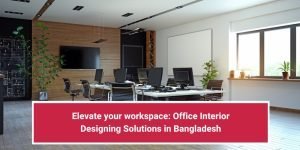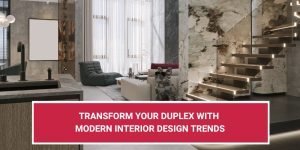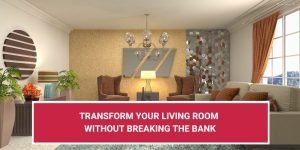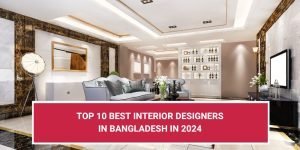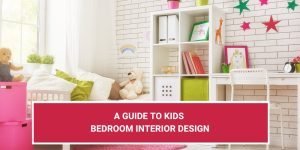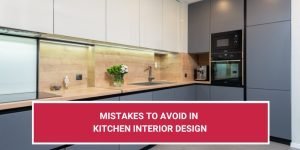Decor tips that will help you attract more customers and get more business!
Wondering what the top tips on restaurant design are?
Looking for ways to make a successful restaurant interior?
Searching for how to develop and improve your restaurant decoration?
This is the blog post that you’re looking for!
Interior design tips to achieve a stunning restaurant
As a restaurant owner, you probably know that creating and running a successful business is about more than just cooking good food.
Indeed, the ambience, the cleanliness, and several other design-related factors are quite crucial.
An effective restaurant design looks to evoke interest and appetite among potential customers to get them to actually place orders, and even to return.
Whether you are building a new restaurant, or remodelling/renovating an existing eatery, here are the top tips and tricks to help you proceed.
Design with your brand identity in mind
What is it that sets your restaurant apart?
What will customers visualise when they’re planning to visit you?
That’s where branding comes into play.
Brand personality is how customers visualise a business.
You may be serving nearly the same menu as another restaurant close by – in this case it is your brand identity which will make you unique.
This is why it is important to keep your brand identity at the root of all interior design decisions you take for your restaurant.
Ensure your logo can be seen at multiple locations
This is a key part of establishing your brand identity.
The logo is the most unique and visible part of your brand.
This is why you should both create a logo of your own (if you haven’t already), and make it visible around the interior.
Create an amazing entrance
Surprised?
Don’t be – in our experience as interior designers in Bangladesh, most design clients fail to appreciate the importance of entrance decor in uplifting the entire experience inside.
For your restaurant, the entrance should be inviting.
Brainstorm with your designer about whether the main door can be made unique in some way – by adding some detail that will catch people’s eyes.
The name of your restaurant should be there above the entrance, and should be clearly visible from a distance.
And finally, try to make it match the theme of your menu and cuisine.
Also want your restaurant exterior designed? Contact our exterior design team!
Balance aesthetics with seating capacity
You may have already considered this, but there is a trade-off between ambience and capacity (how many diners can sit inside your restaurant).
Think about this – maximum seating can be got by going for a straight college cafeteria design (long tables and rows of chairs). But that is hardly suitable for a restaurant, as you have to set a tone for diners.
The question is to find the right middle ground – have the optimum capacity while have pleasing aesthetics.
A key thing to think about here is your break-even – the seating capacity at which you can operate on a zero profit or loss basis.
Have indoor plants
The importance of plants and greenery in creating a welcoming atmosphere that can get visitors in the mood to place orders and dine cannot be overstated.
One, indoor plants are an easy-to-install and low-maintenance decorative element in your restaurant dining room.
Two, and more importantly, they can kill stress, elevate people’s mood, filter the air, and help maintain an ambient temperature inside the room.
There are many ways to introduce plants inside your restaurant’s dining room – large potted plants in the corners, as a “living wall”, on wall shelves, and even in pots suspended from the ceiling.
For customised shelves and other furniture, get in touch with our custom furniture design team.
Do you know which the “bad tables” are?
Yes, there is such a concept in restaurant interior design.
“Bad tables” are those which are placed in certain areas which hamper the dining experience.
For example, tables near the kitchen doors will face a constant stream of waiters entering the exiting the kitchen, which kills the mood and reduces customer satisfaction.
Don’t know how to identify the “bad tables” in your restaurant?
Do one thing: Sit at every single chair in the dining room, and try to picture the situation around you.
Are you constantly facing hot air due to the front door being opened repeatedly?
Can you see into the kitchen (where there will be a lot of confusion)?
Are you too close to another table?
All the tables where such chairs are present are “bad tables”.
You should design the floor plan to minimise the number of such tables.
Think about your customer profiles
Of course, every customer will be different.
However, think about what kind of customer you are trying to attract.
And build up a profile for them – it will give you clues on various aspects of the restaurant decor.
For example, if your largest customer group is college students and teenagers, you should go for bold colours, retro furniture, and some music memorabilia on the walls.
Are you targeting business owners and executives? Then aim for a modern and chic design. Light-coloured furniture with padded chairs would be a great choice.
Remember HVAC!
HVAC is a design abbreviation for three extremely crucial features of your restaurant:
Heating
Ventilation, and…
Air Conditioning
These can make or break the dining experience. Allow us to reveal how.
You’re aware that your kitchen will produce a lot of heat, smoke, and a combination of aromas of different foods in various stages of preparation – which will not add up to a pleasant experience.
It is therefore crucial to block that from reaching the diners. How do you do that – HVAC.
So, make sure you have proper ventilation, and account for sources of heat and air conditioning.
Ensure proper lighting
In our experience as restaurant interior designers, restaurant lighting requirements are best met with a combination of electrical and natural lighting.
It can have a soothing effect on diners.
Getting the light colours right is also important as they can impact moods.
You should ensure that lights are adjustable, and that there are different types of lighting for different times of the day.
Ensure the washrooms are hygienic and classy
From the customer point of view, the bathrooms are the second most important aspect of a restaurant (the dining room being the first).
Remember, they are blocked from the scene inside the kitchen, but they will visit the bathroom maybe multiple times.
So, don’t think of the bathroom as a place with toilet stalls and washing sinks, but as an extension of the dining experience.
- Design it according to your brand identity (including the colours, lighting, and even the logo).
- Ensure the HVAC is impeccable.
- Make sure the bathroom is well-maintained, and checked regularly for cleanliness.
- And see to it that supplies like soap and toilet paper and readily available.
Don’t forget the kitchen
Food is prepared in the kitchen, and it is vital that customers feel reassured that their food is being prepared hygienically.
Of course, you can’t allow diners to randomly walk into the kitchen, but you can install a glass door so people can look into the kitchen from the dining area.
Ensure the kitchen is brightly coloured, well-ventilated, and spacious.
Have proper flooring
The final restaurant design tip: Have proper flooring.
As you will see in our blog post, there are numerous restaurant flooring options to choose from.
How do you select? By checking these features:
- Slipping and safety: The floor must not be slippery. Think about an anti-slipping coating.
- Noise: Noise is a great mood-killer. Consider using flooring that can dampen and absorb noise.
- Durability: The dining room will have both foot traffic and food spills. If the floor cannot deal with that, you’ll have to replace it periodically.
- Maintenance: This is common sense. The more low-maintenance your flooring, the better.
Restaurant design tips for a fabulous customer experience – key takeaways
To summarise, the interior design plays a key role in creating a quality experience for your restaurant’s customers.
Broadly speaking, you need to make sure the restaurant matches your brand identity, creates a welcoming vibe for your customers, and reassures them that they are eating in a hygienic place.
Looking to get your own restaurant designed?
Get in touch with our design team for a consultation!



